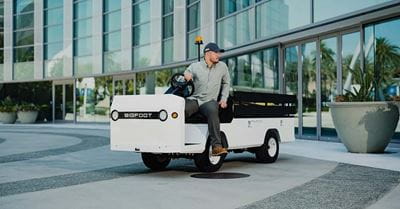Electric Utility Vehicles in Industrial Operations: Beyond Traditional Material Handling

While forklifts remain the backbone of most warehouse operations, today's supply chain challenges demand a more comprehensive approach to facility mobility. Smart warehouse managers are discovering that strategic deployment of electric utility vehicles, from nimble stock chasers to powerful burden carriers, can unlock efficiency gains that traditional material handling equipment simply cannot achieve alone.
The utility vehicle category encompasses far more than basic transportation. Modern industrial utility vehicles serve as force multipliers, addressing specific operational gaps that even the most sophisticated forklift fleet cannot fill. Stock chasers excel at order picking and line feeding operations, particularly in tight aisles where larger equipment cannot navigate effectively. These compact, electric-powered vehicles allow operators to retrieve individual items from shelves efficiently, transforming previously labor-intensive processes into streamlined operations. Burden carriers represent another critical category, designed specifically for moving substantial loads across facilities. Companies like Motrec manufacture burden carriers capable of safely transporting up to 5,000 pounds, with extensive cargo areas and modular designs that can be customized for specific applications. Meanwhile, tow tractors have evolved into sophisticated machines capable of pulling loads up to 200,000 pounds while maintaining precise maneuverability in constrained spaces. Today's warehouses face unprecedented pressure to maximize throughput within increasingly constrained footprints. Traditional material handling approaches often leave efficiency gaps in areas where full-sized equipment cannot operate effectively. Taylor-Dunn's proven solutions demonstrate how the right utility vehicle can transform these challenging spaces into productive zones. Stock chasers shine particularly bright in environments requiring frequent starts and stops. The Cushman Stock Chaser, for instance, features a 9.6-square-foot cargo deck with 1,000-pound payload capacity, specifically engineered for navigating tight corners and narrow aisles. This agility becomes invaluable during peak operations when every minute of productivity matters. Personnel carriers address another common bottleneck: moving workers efficiently across large facilities. Rather than having staff walk lengthy distances between zones, strategic deployment of personnel carriers can significantly reduce non-productive time while improving worker satisfaction. Motrec's personnel carriers are designed for easy navigation and precise stopping, delivering excellent passenger experiences across various facility sizes. Safety considerations extend far beyond traditional lift truck operations when implementing comprehensive facility mobility strategies. Modern utility vehicles incorporate sophisticated safety features specifically designed for mixed-traffic environments. For example, most vehicles feature low speeds, low step heights, high visibility, emergency off switches, and shutoff timers, all engineered to reduce safety-related injuries while improving operator comfort. The transition to electric utility vehicles represents a paradigm shift in industrial operations, offering dual advantages of environmental stewardship and operational cost efficiency. Unlike their internal combustion counterparts, electric utility vehicles produce zero tailpipe emissions, directly addressing air quality concerns in enclosed warehouse environments and outdoor facilities alike. This elimination of exhaust pollutants not only supports corporate sustainability goals but also creates healthier workspaces by reducing employee exposure to harmful particulates and nitrogen oxides. From a financial perspective, electric utility vehicles demonstrate compelling economics through reduced energy expenditures and minimal maintenance requirements. Industry analyses reveal that electricity costs for charging these vehicles average 3-5 cents per mile—less than a third of the fuel costs for diesel or gasoline alternatives. The operational savings extend further through simplified maintenance protocols: electric drivetrains eliminate oil changes, transmission fluid replacements, and exhaust system repairs, which collectively account for 40-50% of traditional vehicle maintenance costs. Successful utility vehicle implementation requires careful analysis of specific operational requirements rather than one-size-fits-all approaches. The versatility of modern utility vehicles enables customization for unique applications that go far beyond warehouses, from baggage handling and maintenance operations in airports to campus transportation and industrial towing applications. Facilities must consider factors including load requirements, travel distances, charging infrastructure, and integration with existing material handling workflows. Transforming your facility's efficiency through strategic utility vehicle deployment requires expert guidance and comprehensive equipment knowledge. Raymond West brings decades of material handling expertise plus partnerships with industry leaders including Taylor-Dunn, Polaris, GEM, Motrec, and the ICON EV family. Their experienced team can assess your specific operational challenges and recommend optimal utility vehicle solutions that integrate seamlessly with your existing equipment fleet. Contact Raymond West today to discover how the right utility vehicles can unlock productivity gains you never knew were possible.Understanding the Utility Vehicle Landscape
Addressing Space and Efficiency Challenges
Safety and Personnel Considerations
Environmental and Cost Benefits
Strategic Implementation Considerations

